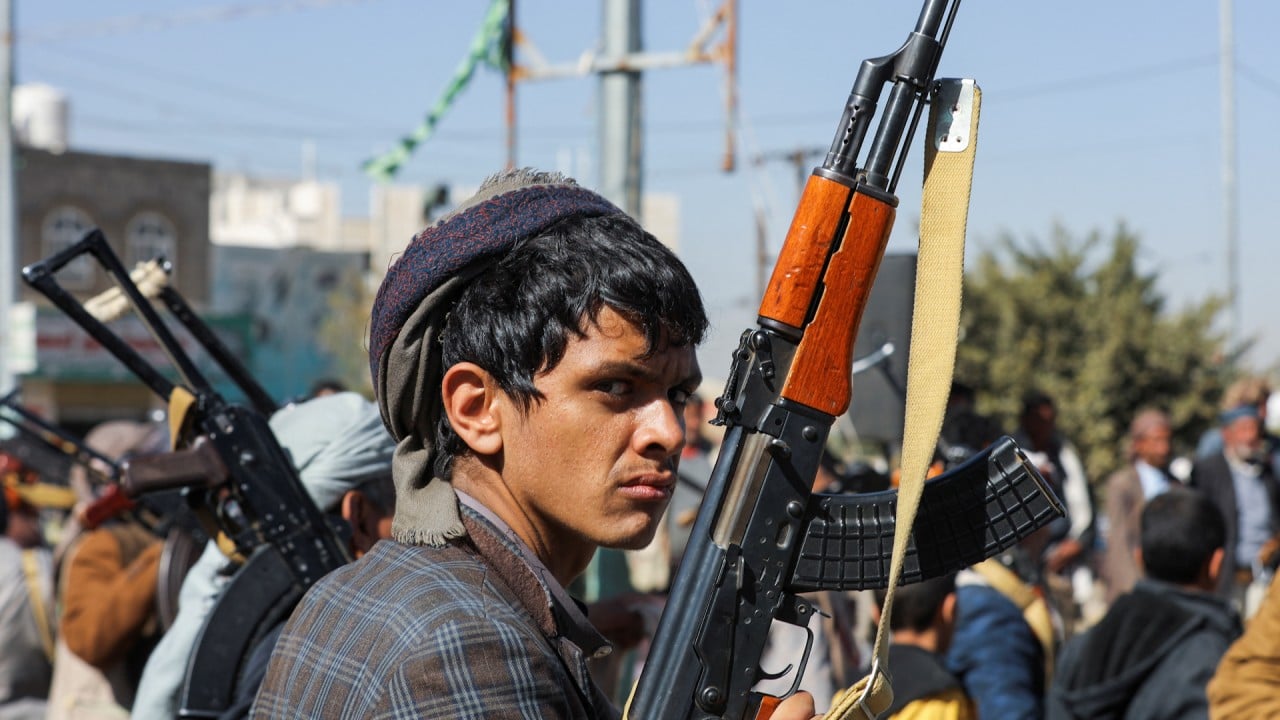In a statement Tuesday, Defence Secretary Lloyd Austin said the strikes in Iraq were at the direction of US President Joe Biden and targeted facilities used by the Iranian-backed Kataib Hezbollah militia group and other Iran-affiliated groups in Iraq.

“These precision strikes are in direct response to a series of escalatory attacks against US and Coalition personnel in Iraq and Syria by Iranian-sponsored militias,” Austin said. Those strikes hit militia facilities in Jurf al-Sakhar, which is south of Baghdad, al-Qaim and another unnamed site in western Iraq, two US officials said.
Late Tuesday, US Central Command (Centcom) announced it had also struck two Houthi anti-ship missiles that were aimed into the Southern Red Sea and were prepared to launch.
US presses ahead with ‘least bad’ option confronting Houthis
US presses ahead with ‘least bad’ option confronting Houthis
“US forces identified the missiles in Houthi-controlled areas of Yemen and determined that they presented an imminent threat to merchant vessels and the US Navy ships in the region,” Centcom said.
Both fronts- land attacks in Iraq and Syria, and sea attacks originating from Yemen – have seen a significant uptick in launches and counterstrikes over the last few days.
In Iraq, US strikes on the Kataib Hezbollah sites came hours after the US said militants fired two one-way attack drones at al-Asad Air Base, injuring US service members and damaging infrastructure.
And they followed the militia’s most serious attack this year on the airbase, when it launched multiple ballistic missiles on Saturday.
Centcom said it targeted Kataib Hezbollah headquarters, storage, and training locations for rocket, missile, and one-way attack drone capabilities.
In Tuesday’s drone attacks against al-Asad, US defences were able to intercept the first drone but it crashed on base and the second drone hit the base, US officials said.
Injuries, including traumatic brain injuries and smoke inhalation, were reported to be minor. The officials spoke on the condition of anonymity to provide details that had not been announced publicly.
On both fronts, the Iranian-backed militias have employed ballistic missiles to target US bases and ships, which marks an escalation, said Behnam Ben Taleblu, a senior fellow at the Foundation for Defence of Democracies who specialises in Iran.
UN chief warns Israel’s rejection of two-state solution threatens global peace
UN chief warns Israel’s rejection of two-state solution threatens global peace
The militias have typically used drones and rockets to attack. Tehran supplied Shia militias in Iraq with short-range and close-range ballistic missiles in 2019, Taleblu said, but until November’s attacks they had not been used.
During Saturday’s larger-scale attack, multiple ballistic missiles and rockets launched by Iranian-backed militants targeted al-Asad, but most were intercepted by air defence systems there, Sabrina Singh, Pentagon spokesperson, said on Monday. She said other munitions hit the base.
Al-Asad is a large airbase in western Iraq where US troops have trained Iraqi security forces and now coordinate operations to counter Islamic State.
Singh said Saturday’s attack was a “barrage”. It was the first time since November 20 that Iranian proxy forces in Iraq had fired ballistic missiles at US bases in Iraq.
A coalition of militias calling itself the Islamic Resistance in Iraq has taken credit for a number of the attacks on US forces. Kataib Hezbollah is one of the groups within that umbrella organisation.
Iran has also supplied the Houthis with ballistic missiles, and that group is the first Iranian proxy to fire medium-range ballistic missiles and anti-ship ballistic missiles, Taleblu said.
“With Yemen, think of it as an intensification of the problem,” Taleblu said.
Saturday’s ballistic missile attack on al-Asad injured four US service members, all of whom have returned to duty. One Iraqi security forces member was also injured.
Doomsday Clock remains at 90 seconds to midnight amid wars in Gaza, Ukraine
Doomsday Clock remains at 90 seconds to midnight amid wars in Gaza, Ukraine
Since the Israel-Gaza war began in early October there have been more than 151 attacks on US facilities in Syria and Iraq.
According to the Pentagon, two attacks took place on Monday and included multiple rockets fired at US and coalition troops at Mission Support Site Euphrates in Syria and a single rocket fired at the Rumalyn Landing Zone in Syria. Neither attack resulted in casualties or damage.
The US struck back at the militia groups late last month, ordering a round of retaliatory strikes after three US service members were injured in a drone attack in northern Iraq. Kataib Hezbollah claimed credit for the attack, carried out by a one-way attack drone.
The US, in response, hit three sites, destroying facilities and likely killing a number of Kataib Hezbollah militants, according to the White House at the time.


